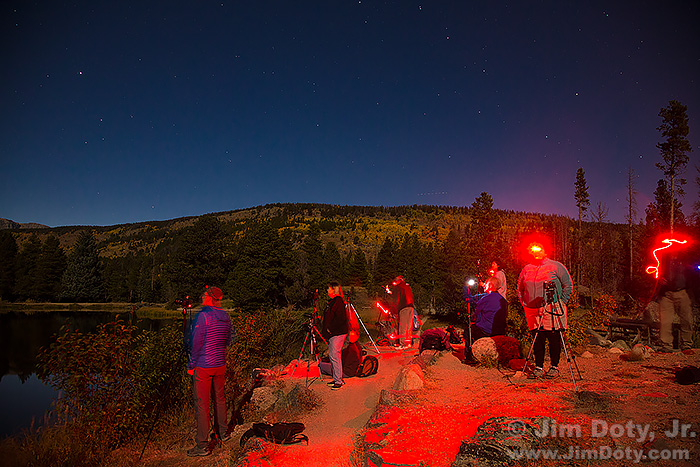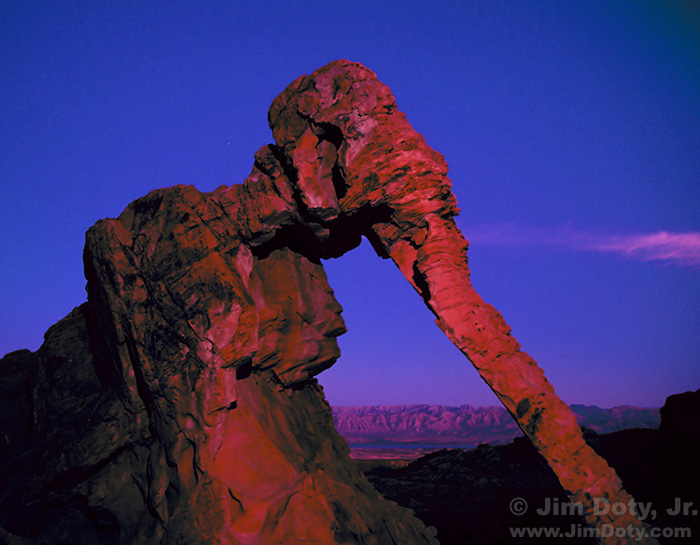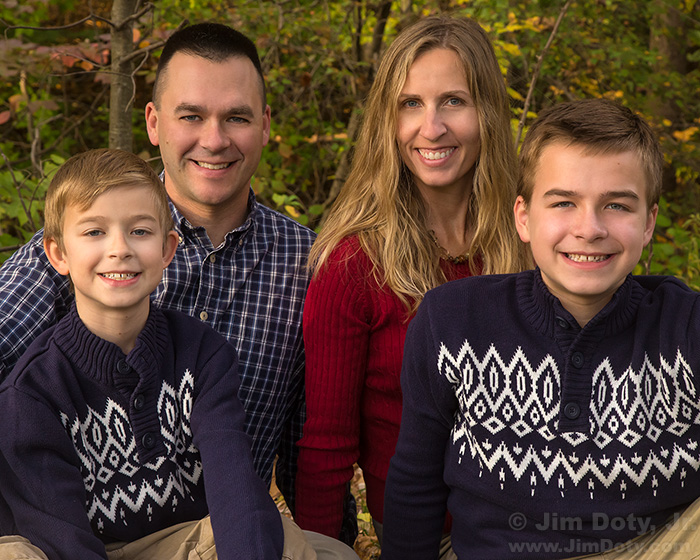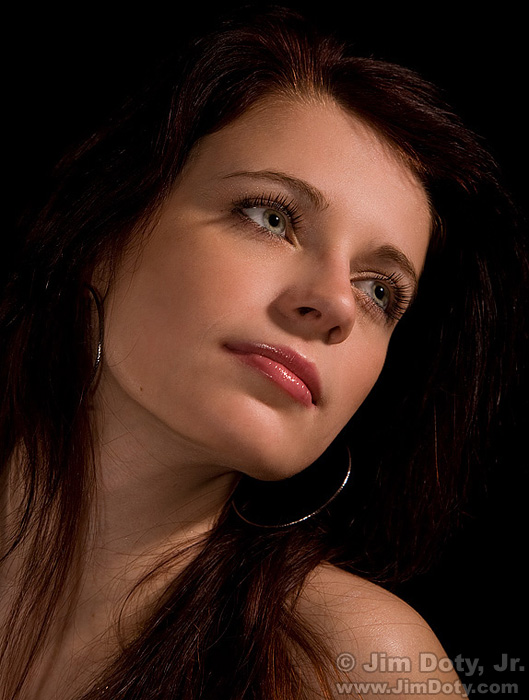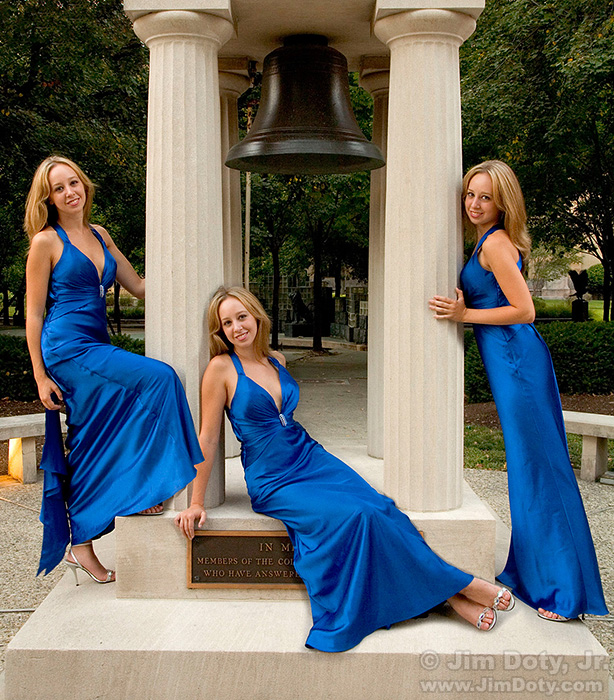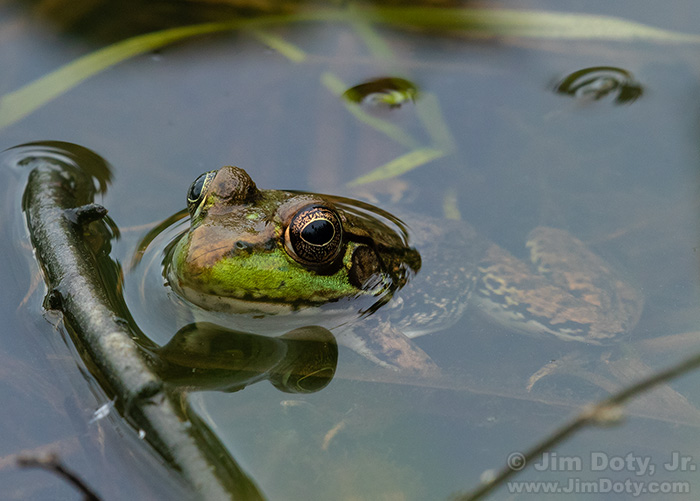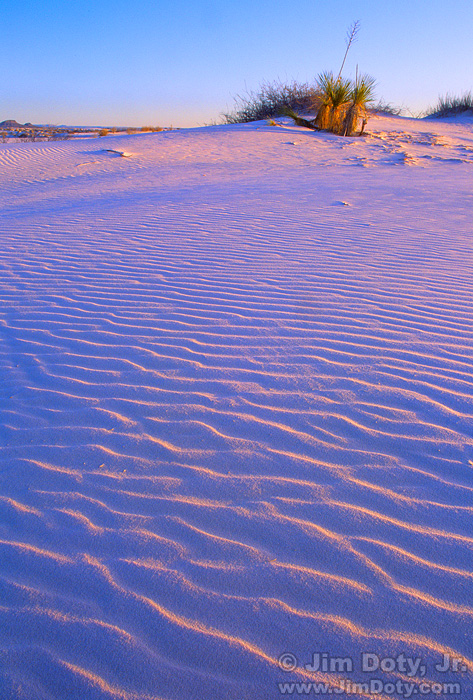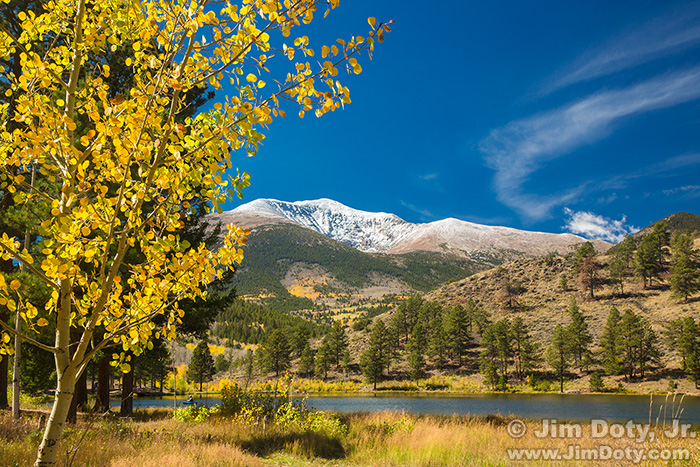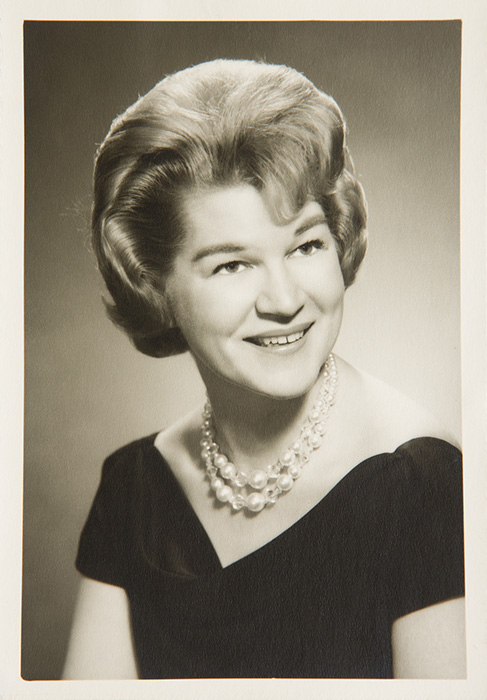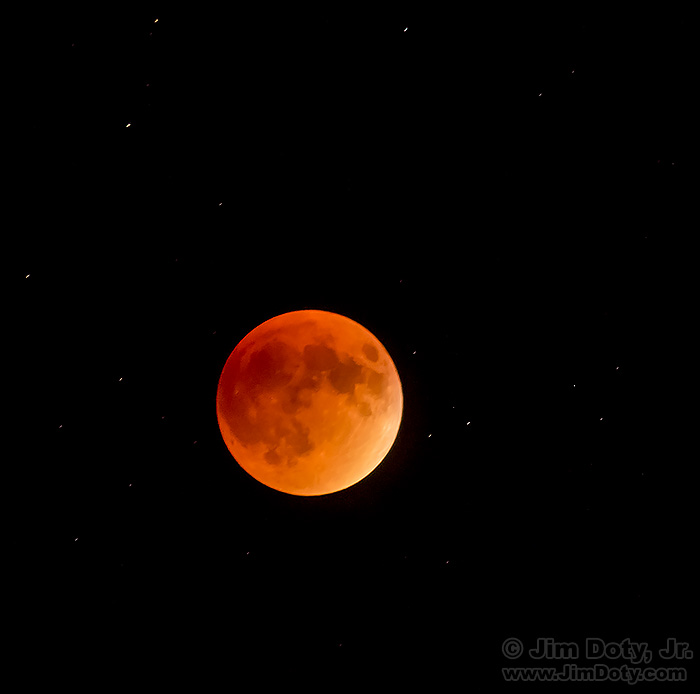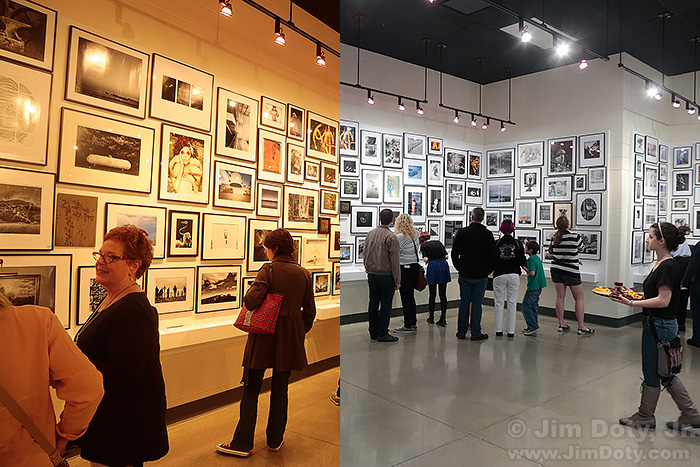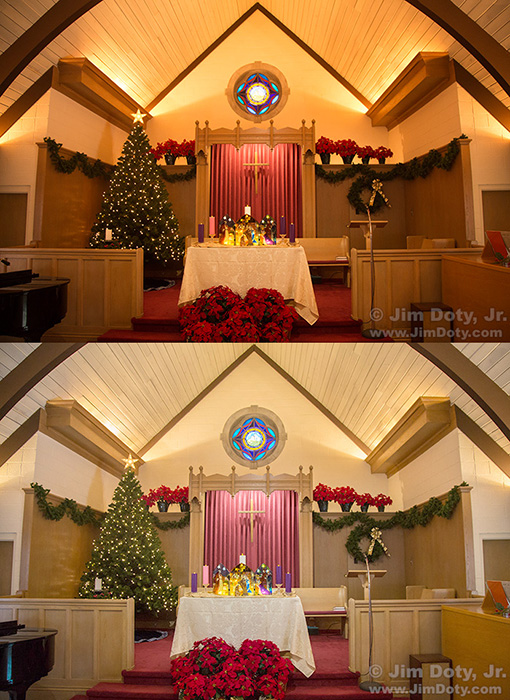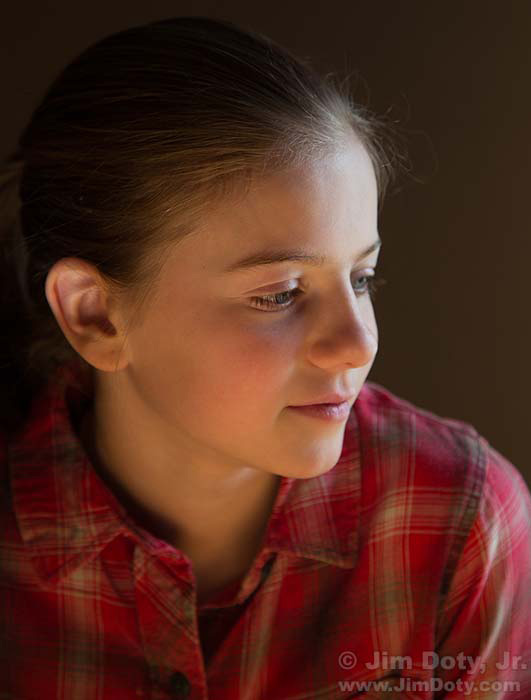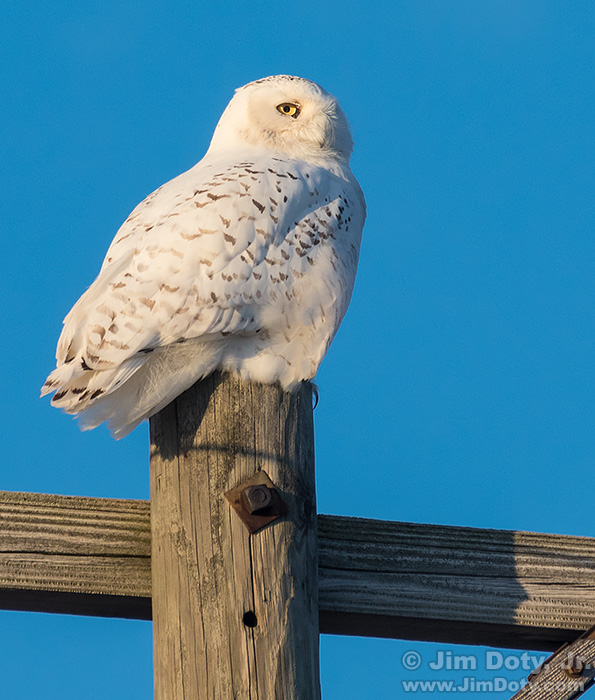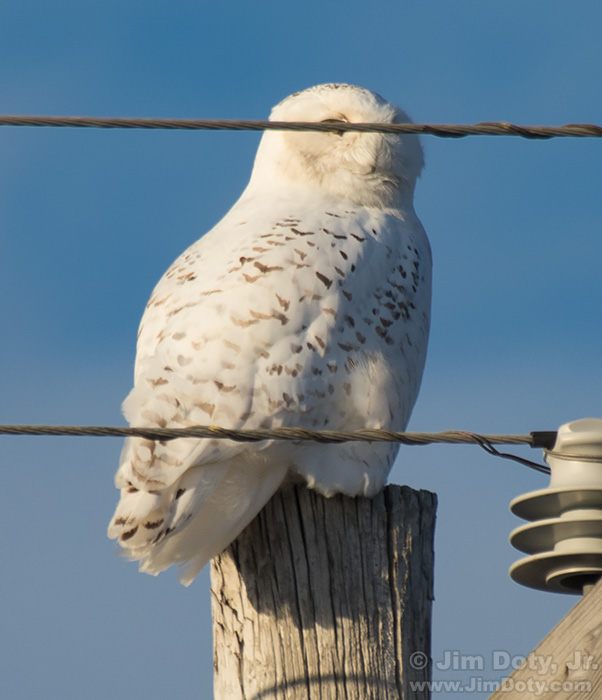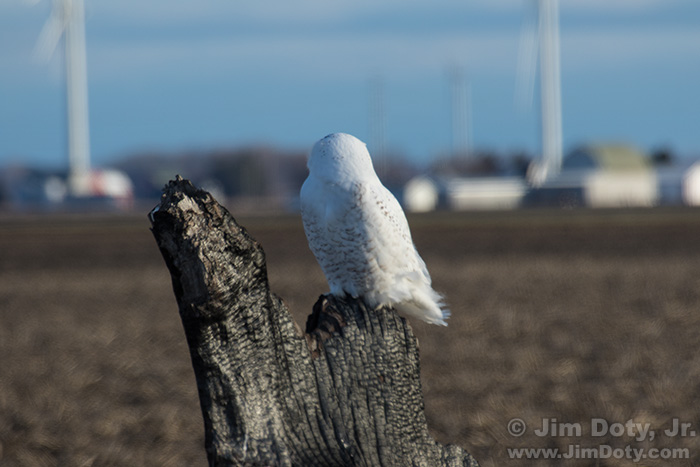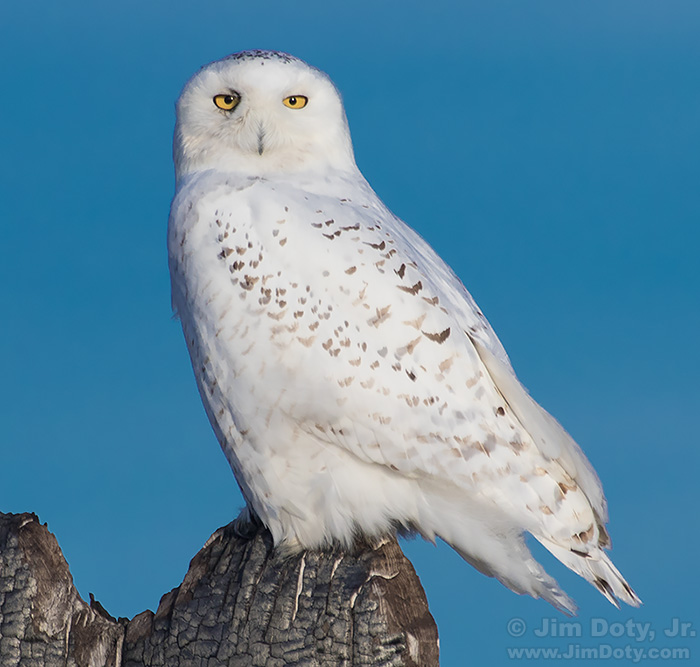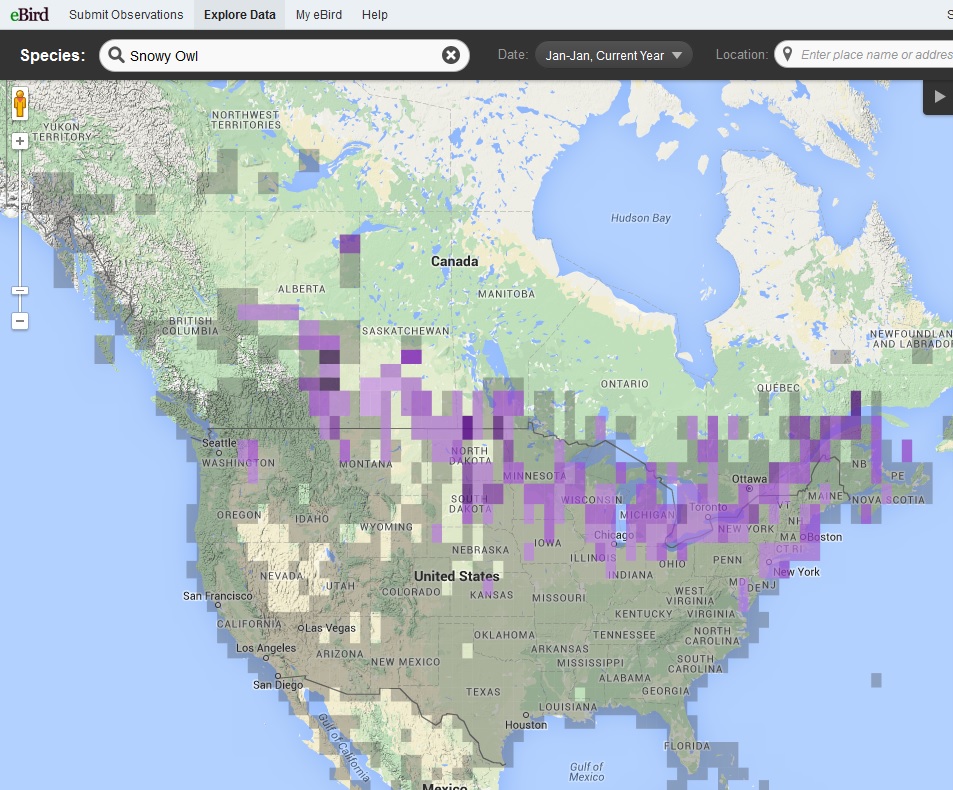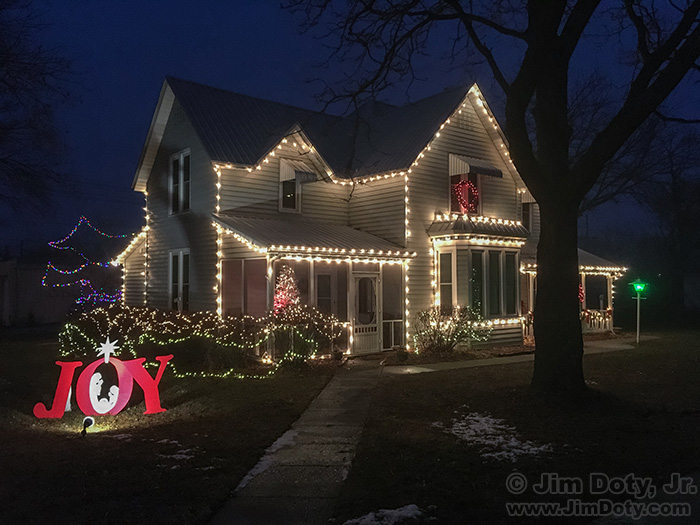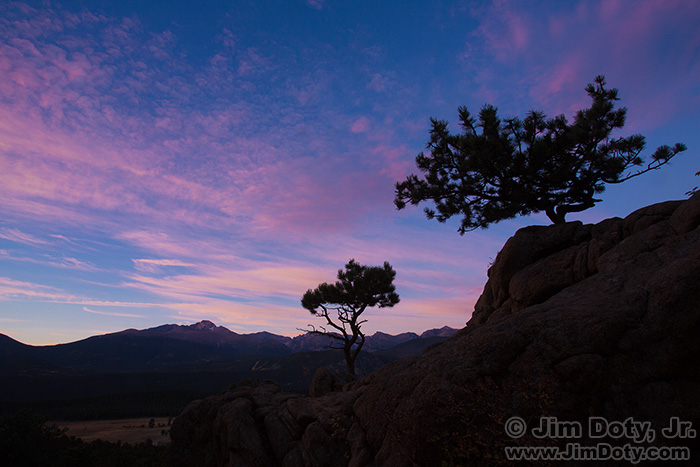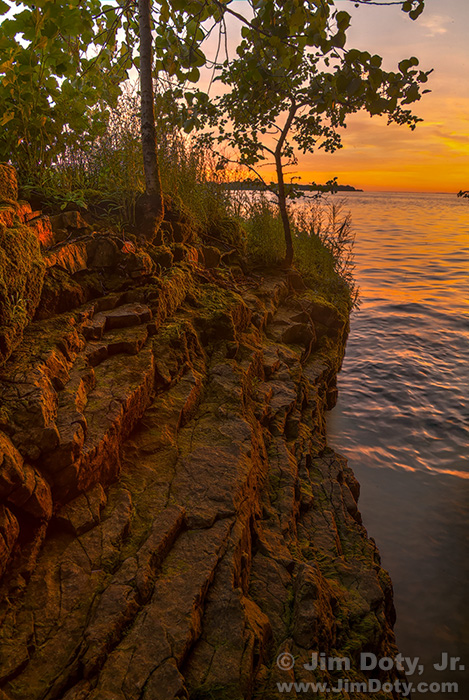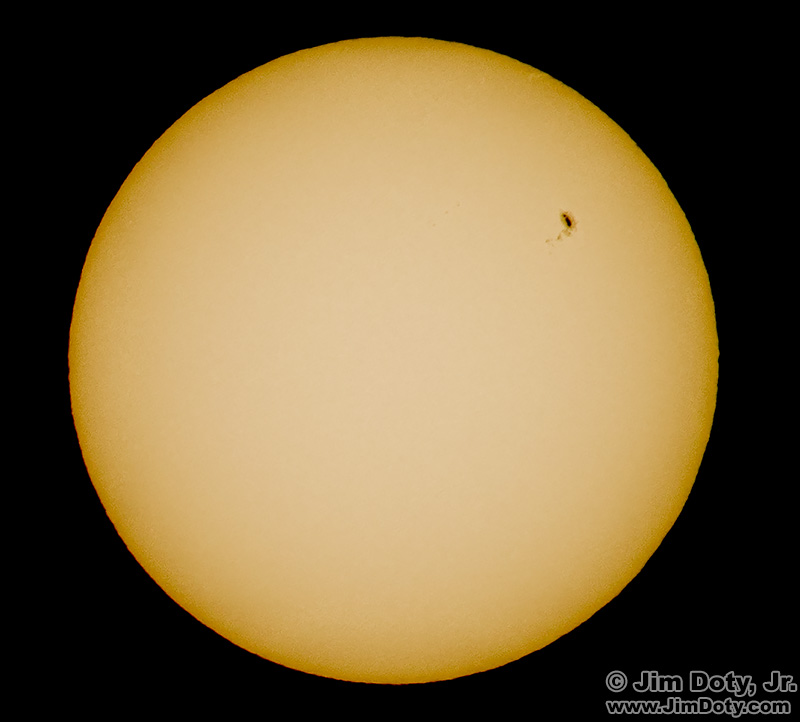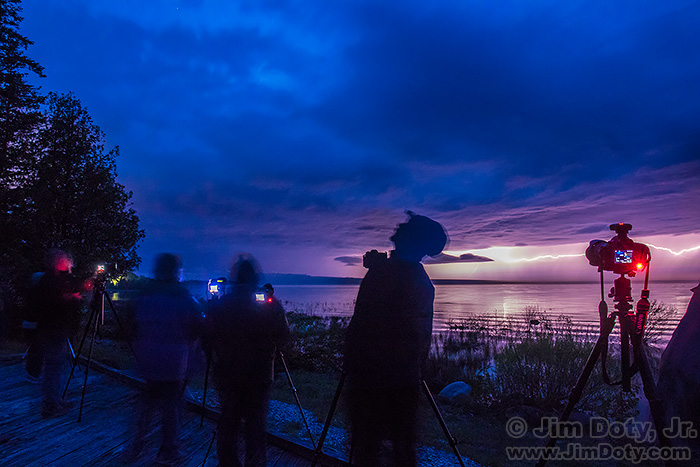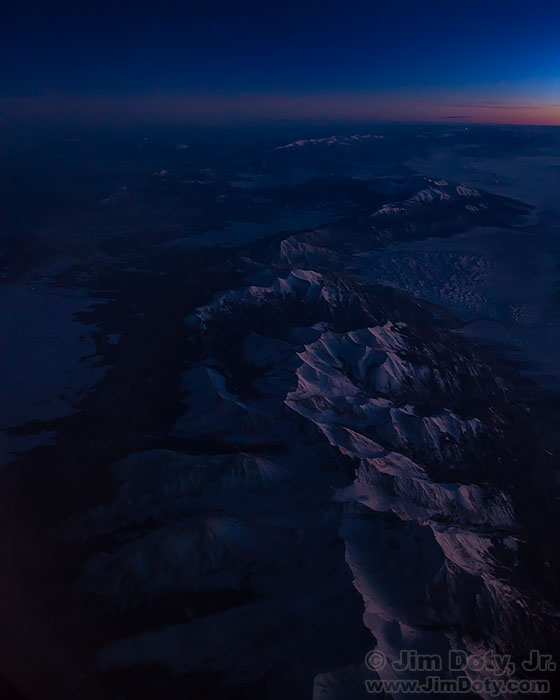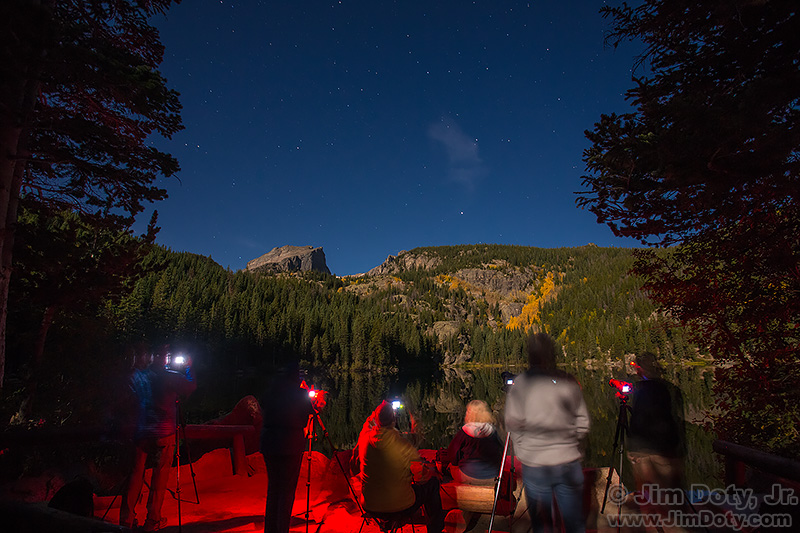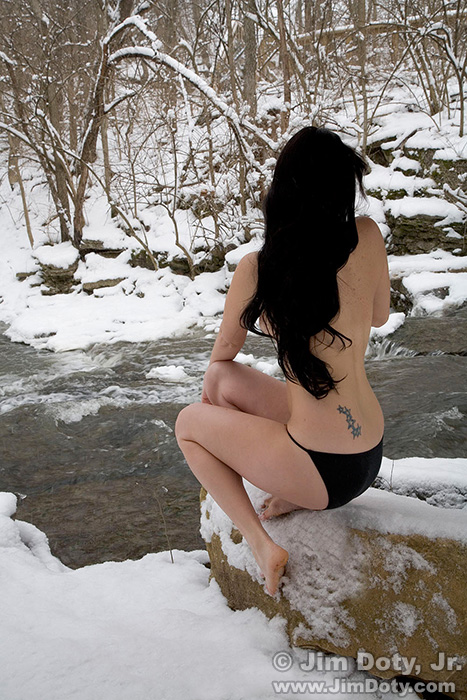A red headlamp is an essential tool for night photography. Before you rush out and buy one, make sure it has the most essential feature (other than the red LED). Some inexpensive headlamps have this feature and some very expensive ones don’t, so cost is not the issue.
Category Archives: Techniques
Favorite Photo, November 20
There is only one photo in my “favorite photos” folder for November 20, but it is one of my all time favorite images.
Favorite Photo, November 3
Today’s favorite photo was such an easy pick. A few years ago our oldest son wanted a family portrait. We went to a wooded area not far from his home and created some images.
Favorite Photo, October 30
All of the photos in my “favorite photos” folder for October 30 are portraits. It must be a portrait kind of day.
Favorite Photo, August 23
My favorite photo for August 23 was another easy choice. I was doing a photo shoot with Ellie Marie at Battelle Riverfront Park in downtown Columbus, Ohio.
If You Want a Green Frog, You May Have to Get Into the Swamp
If you want a nice image of a frog, you have to go where the frogs are. And that means getting down in the swamp or bog or whatever other wet place the frog happens to be.
The Depth of Field Series
Controlling depth of field is one of a photographer’s most powerful creative tools. That is why my photography book devotes two chapters and 40 pages to tools and techniques you can use to control depth of field.
Your Camera Does NOT Capture Reality! (and what to do about it)
You have heard it said a lot, and maybe said it yourself: “This picture doesn’t do the scene justice.” That is often true and for several reasons. One is that digital cameras do not capture reality. No matter how fancy or expensive, digital cameras simply do not capture what your eyes see. That is also true with film cameras. All color photographic films have different color characteristics. Some have better reds, others have better greens or blues. Some are more saturated and others less saturated. But none of them are totally color realistic. So why don’t digital cameras give you realistic images and what can you do about it?
Originally posted December 16, 2015. Revised, expanded, and re-posted May 4, 2018. Updated October 31, 2018.
How to Be A Better Wildlife and Nature Photographer
When I posted this photo on one of my Facebook pages, a friend posted this happy comment:
“I LOVE this egret photo!!!!!!!!!!!!!! Look at the right wing trailing in the water. How DO you capture these?!”
Good question.
You Can Create High Quality Digital Images of Analog Prints, Even if You are Traveling
You can create high quality, high resolution digital images of analog prints, and you can do it on the road without having a flatbed scanner and computer with you. You probably have everything you need with the possible exception of a couple of small, inexpensive accessories (less than $10 each). This article will show you what to do, step by step.
How To Photograph the Super Blue Blood Moon Eclipse, January 31, 2018
Here in North America, Wednesday morning, January 31, you have your chance to photograph the first supermoon total lunar eclipse since September 2015. This article will show you how. Continue reading
Setting a Custom White Balance Will Save You a Lot of Time
Setting a “Custom White Balance” at the beginning of a photo shoot will save you a lot of time. It will only take a minute or so and can save you a lot of work later on. Think how long it would take you to color correct 250 images.
Posted April 22, 2015. Revised and re-posted Jan. 5, 2018.
Setting the Best White Balance in a Mixed Lighting Situation
POTD: The Wonder of Reflected Light
“How To†Series: Snowy Owl Photography
If there are cold enough temperatures and plenty of snow cover on the ground, the northern United States has a winter invasion of Snowy Owls. These are magnificent creatures and well worth your photographic time and attention. This series is filled with tips on how to find and photograph snowy owls.
Snowy Owl Photography: Solving A Photo Problem (And the Right Way to Exit Your Vehicle)
When I am traveling with my highly trained and high paid photographic assistant it is his job to remove trash barrels when they are in the way, cut down trees that spoil my view, run out into the meadow and scare off the cow elk that are in front of the bull elk I want to photograph, rip boards off of old barns that don’t look quite distressed enough, pull on the whiskers of a sleeping cougar to wake it up, and cut down utility lines that are obstructing a clear view of my subject. But he wasn’t with me on this trip due to sitting in jail over a minor incident in Yosemite. So I had a challenge on my hands that I had to solve myself.
I am kidding, of course. The prior paragraph was inspired by really crazy things a few photographers do but shouldn’t be doing.
Snowy Owl Photography: Control the Background for Better Images
A simple change of background can turn a disappointing wildlife photo into a great one. Professional wildlife photographers think about backgrounds all the time and do everything they can to improve the background. Less experienced wildlife photographers are so excited to find an interesting creature that they give the background precious little thought.
A Snowy Owl Photo Expedition
What is a Snowy Owl expedition really like? This article is your chance to find out. Join me for a two day photo safari! I give you tips and photo suggestions along the way, and you get to see how I prepare, plan, and adapt on a photo trip. This is also about what to do when things don’t go according to plan.
How to Find and Photograph Snowy Owls
Winter is your opportunity to photograph Snowy Owls. When it is cold enough and there is enough snow cover, snowy owl move down into the northern U.S. The colder it is the farther south they move. If conditions are right, don’t delay. If the winter turns warmer the snowy owls will head farther north.
This is the first in an ongoing series of articles on Snowy Owl photography. Originally posted January 25, 2016. Revised and re-posted Jan. 1, 2018. Updated January 10, 2019.
How to Photograph Christmas Lights with Your DSLR, ILC, or Smartphone
The photo abilities of smartphones have improved dramatically in the last few years, especially in low light situations. Just point your camera phone at the lights and click the shutter. Exposure can be a bit iffy. If the photo looks too light or too dark and your phone will allow you to alter the exposure, take advantage of that feature.
Photo Shoot: Using a Halo Softbox with a Yongnuo Radio Controlled Flash System
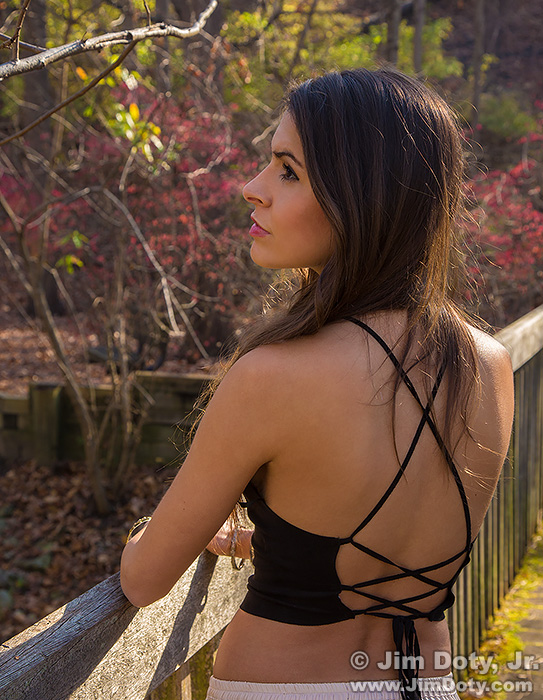
Kristina. Sunlight coming from the right. Halo softbox with Yongnuo speedlite providing light from the left.
After testing a Bob Davis 45 inch Halo Softbox and Yongnuo YN600EX-RT radio flash on my most available model (my dog), I needed to test it out on a real model. Opportunity called in the form of a message from Kristina, a professional model based in Los Angeles (and an absolute delight to work with). She would be in Ohio for Thanksgiving and she wanted to schedule a shoot. I was leaving town for Thanksgiving, but fortunately for us we had one day to shoot after she arrived and before I left.
Giving Yourself Options: HDR Photography
In a single exposure your camera can’t capture everything your eyes see in high contrast situations with a wide range of tonalities. HDR photography gives you more options.
Getting Started with High Dynamic Range (HDR) Photography
Compared to the human eye, digital cameras have a very limited dynamic range. Your digital camera simply can’t capture the range of tones from light to dark that your eyes can see. That is why HDR photography has become so popular with so many photographers, and absolutely essential for some commercial photographers.
Waterfalls and Artistic Shutter Speed Choices
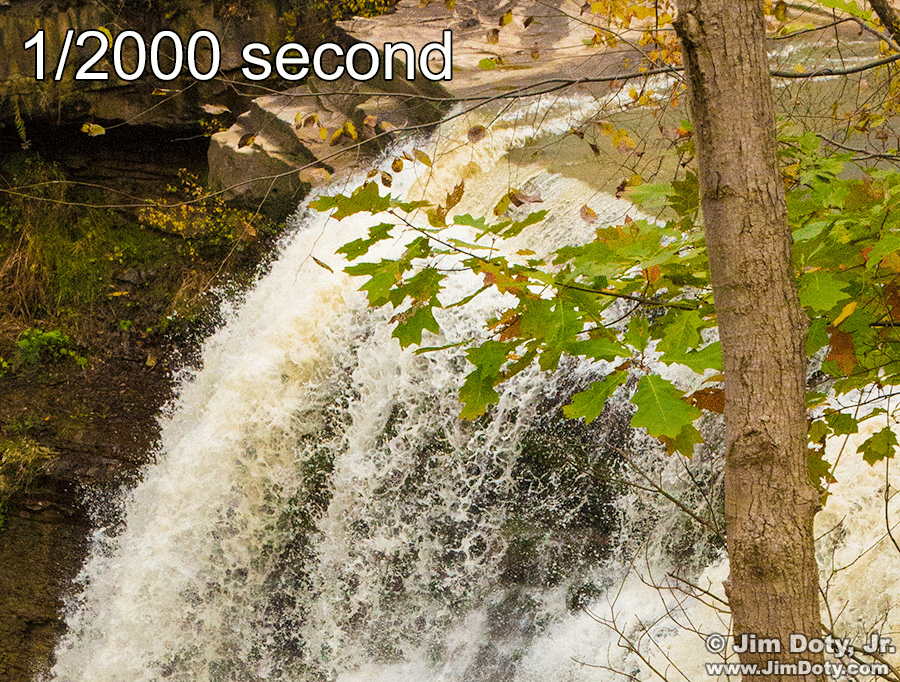
Three different exposure combinations at Brandywine Falls, all of them cropped from larger images. Click for a larger version.
Another photographer and I were shooting together yesterday at Brandywine Falls in Cuyahoga National Park. During the time we were there we saw dozens of people taking pictures of the waterfall. Most of them were in full auto-exposure mode, making no personal changes in their exposure settings whether they were photographing the waterfall, each other, or the leaves in the trees. I bet most of them had no idea that they had turned important artistic decisions over to a computer chip.
Buying a Headlamp for Night Photography: The Essential Feature
A red headlamp is an essential tool for night photography. Before you rush out and buy one, make sure it has the most essential feature (other than the red LED). Some inexpensive headlamps have this feature and some very expensive ones don’t, so cost is not the issue.
How To Photograph the Sun (and an Eclipse) with Lee and Other High Density Solar Filters
After posting the last article I am getting questions about how to photograph the sun with a solar filter. It is time to cover the basics.
Lightning Over Lake Michigan
At my photography workshop in Northern Michigan we went on a field trip to Lake Michigan. Our goal was to shoot the Milky Way and Northern Lights over the lake.
How to Photograph from a Plane at Dusk (The Sangre de Cristo Mountains)
Everything but time was in my favor. I was able to grab a good window seat (well ahead of the engines) with a clean, un-crazed window on the correct (right) side of the plane to photograph the Sange de Cristo Mountains.
How To Focus Your Lens at Infinity for Night Photography
The most important and difficult step in night photography is to focus your lens at infinity. If you have tried to focus on the stars at night you have already learned that it is an impossible task for the autofocus system and just about impossible for you to do manually. You just can’t see clearly enough through the viewfinder in the dark of night to manually focus on the stars. Fortunately, there are some ways to get the job done.
Originally posted Jan. 8, 2017. Revised and expanded Feb. 10, 2017.
How to Photograph a Nude Model in the Snow
It is difficult enough to create a beautiful nude image under normal circumstances, much less in the cold and snow. You need to bring some significant skills and experience to the task. So does your model.

